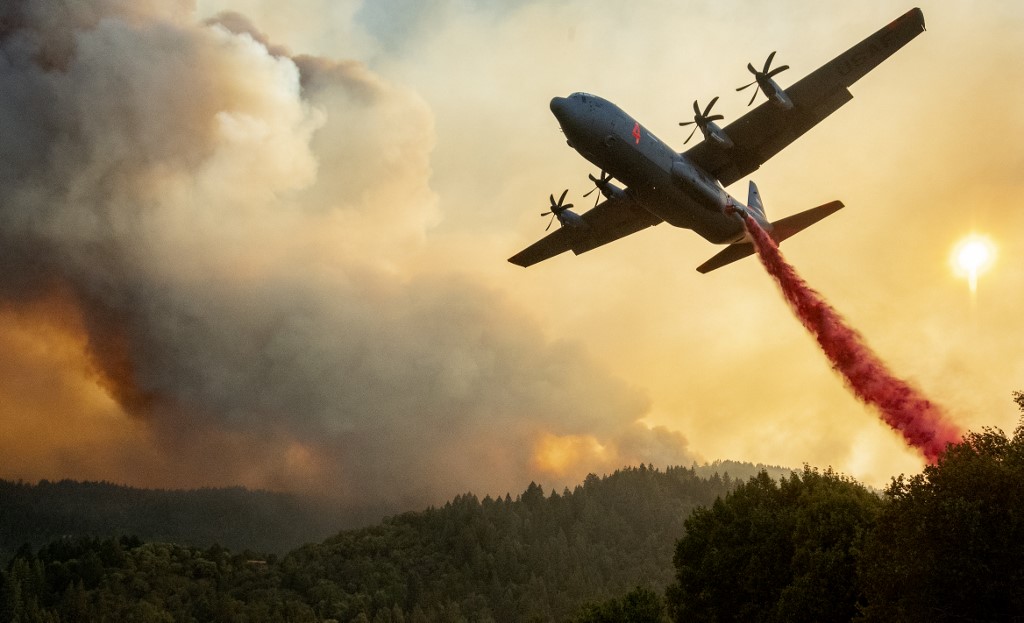
LOS ANGELES, California (AFP) — Thousands of firefighters made small progress on Monday as they battled to contain historic wildfires in California, with potentially dangerous lighting storms proving milder than expected and temperatures easing.
Governor Gavin Newsom said some 625 fires were burning throughout the state and had scorched more than 1.2 million acres — nearly the size of the Grand Canyon.
Of those fires, 17 were considered major, he said, including the LNU Lightning Complex and the SCU Lightning Complex — which comprise several fires each and have become two of the largest blazes in the state’s history as far as acreage burned.
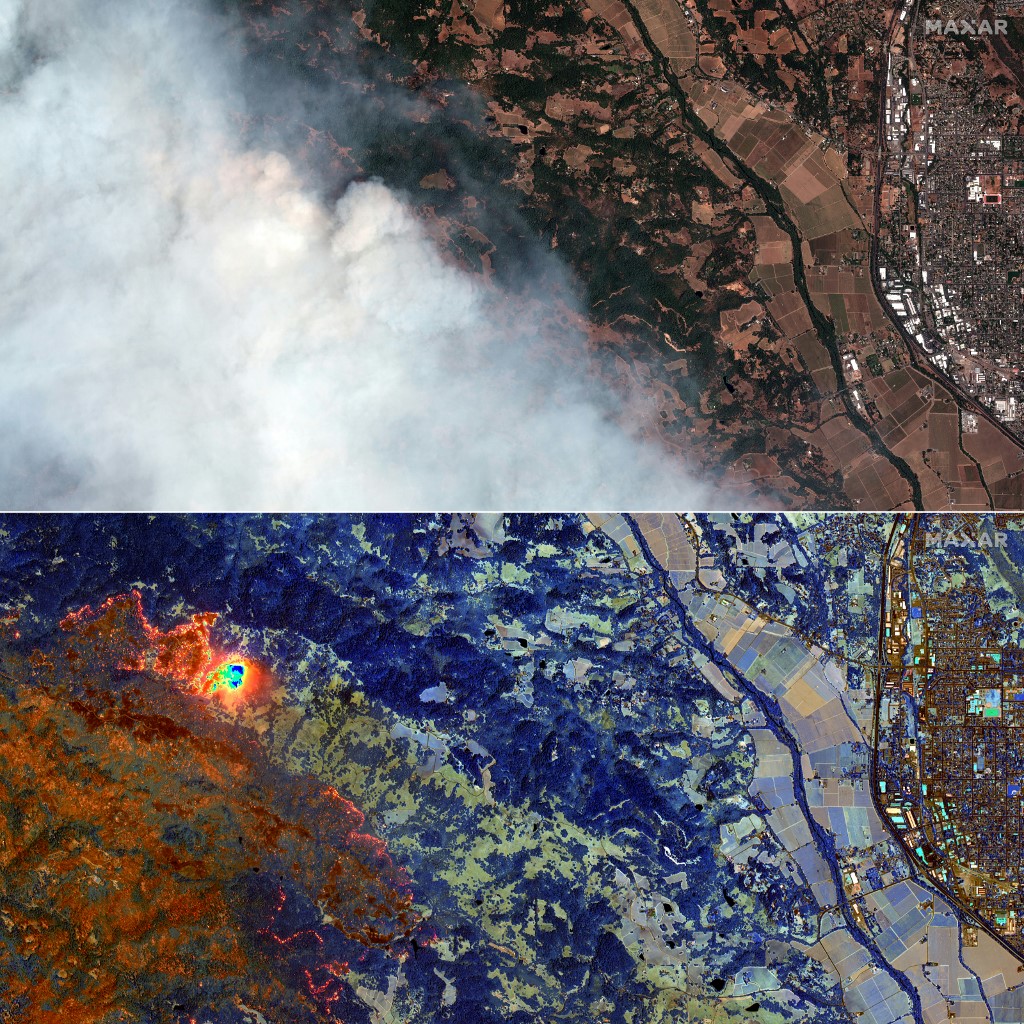
A series of massive fires in northern and central California forced more evacuations as they quickly spread August 20, darkening the skies and dangerously affecting air quality. (Photos by Handout / Satellite image ©2020 Maxar Technologies / AFP)
The LNU Lightning Complex which erupted north of San Francisco on August 8 was 22 percent contained Monday afternoon.
The SCU Lightning Complex, which also erupted August 8 and is burning southeast of San Francisco, was 10 percent contained early in the day.
Another major fire — the CZU Lightning Complex — has burned through areas closer to the coast.
The fires have for the most part been sparked by so-called dry lightning strikes in the central and northern part of the state.
“We are essentially living in a mega-fire era,” said Jake Hess, a unit chief in Santa Clara for state firefighting agency Cal Fire.
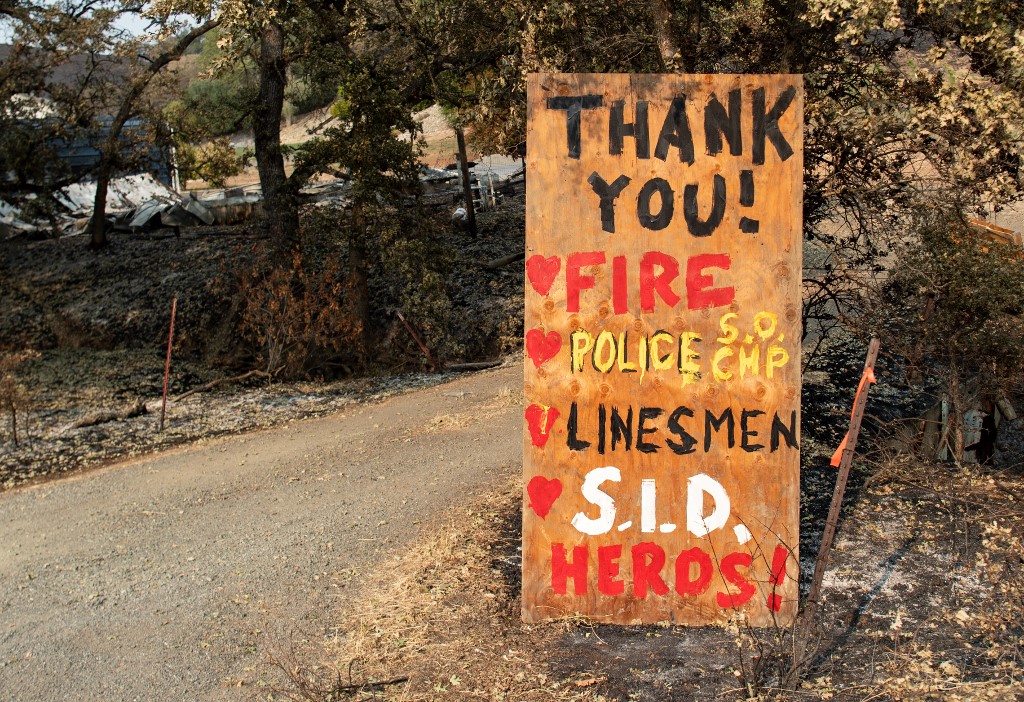
Governor Gavin Newsom said some 625 fires were burning throughout the state and had scorched more than 1.2 million acres — nearly the size of the Grand Canyon. (Photo by JOSH EDELSON / AFP)
“We have folks that have been working for Cal Fire for the last five years and that’s all they understand, it’s mega fires since they’ve started.”
Hess said the fires have become larger and more dangerous every year and warned that firefighters had to pace themselves to get “to the end of this marathon.”
Pandemic complicates fire response
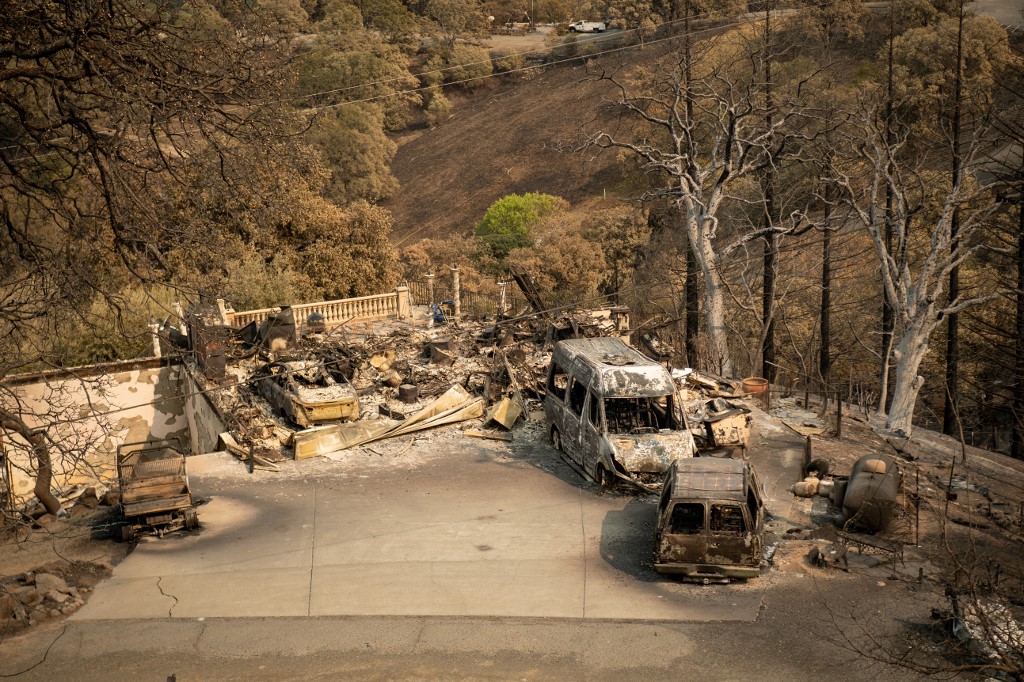
Governor Gavin Newsom said some 625 fires were burning throughout the state and had scorched more than 1.2 million acres — nearly the size of the Grand Canyon. (Photo by JOSH EDELSON / AFP)
The fires have destroyed more than 100 homes and other structures and are threatening 100,000 more buildings, officials said.
Some 14,000 overstretched and exhausted firefighters – some from other states or even Canada and Australia — have been struggling to contain the flames.
The staggering scale of the fires, coming this early during fire season which normally runs from August to November, is unprecedented.
Still, there was some relief for fire crews overnight as high temperatures and low humidity that have fanned the flames in the past week eased a bit.
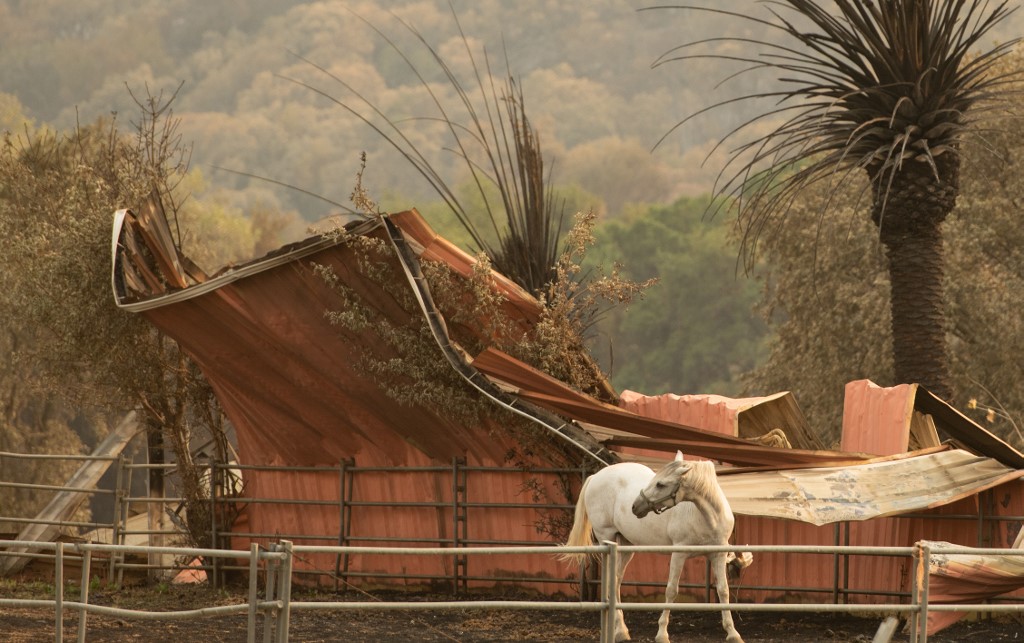
Governor Gavin Newsom said some 625 fires were burning throughout the state and had scorched more than 1.2 million acres — nearly the size of the Grand Canyon. (Photo by JOSH EDELSON / AFP)
Lightning storms overnight also were not as widespread as initially feared.
But authorities urged people not to let down their guard as more lighting strikes could hit the region.
The fires have posed an added challenge to the state as it battles to contain the COVID-19 pandemic which has left many part of California still on lockdown.
Newsom said authorities were taking extra precautions — including health screenings — at shelters set up to accommodate some of the tens of thousands of people forced to evacuate because of the fires.
© Agence France-Presse







